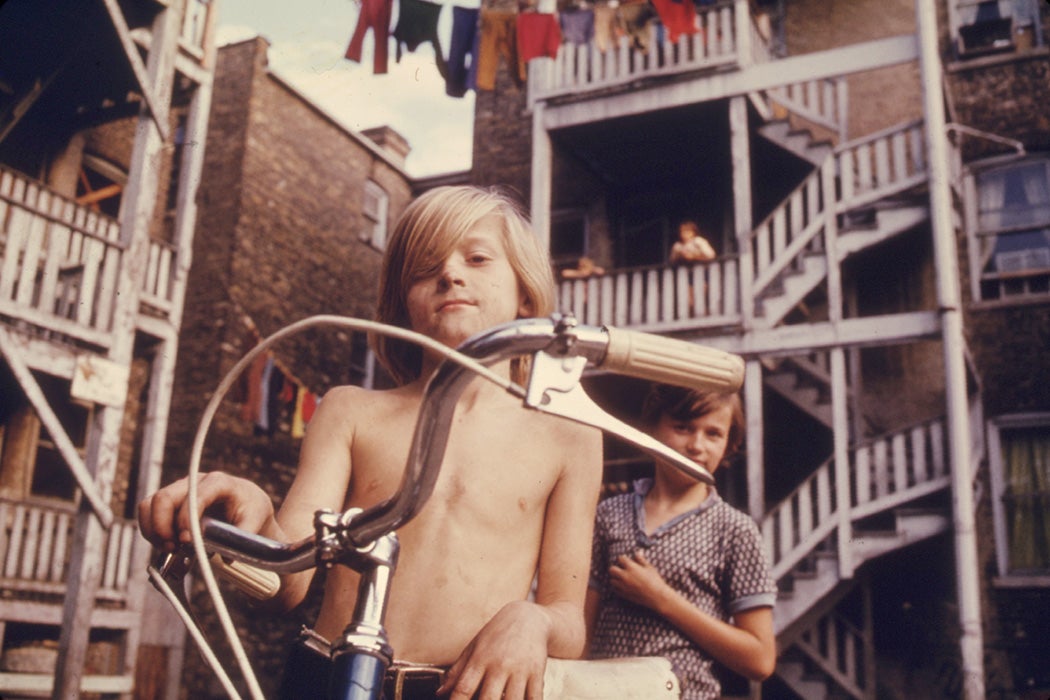In the late 1960s, Black and Latino Chicagoans organized around issues of affordable housing and poverty. And, as sociologist Roger Guy writes, so did a group of Appalachian whites with a grand, but ultimately doomed, vision for their run-down neighborhood.
After World War II, Guy writes, tens of thousands of white Appalachians moved to Midwestern cities. In Chicago, they generally settled in Uptown. Soon, this became a neighborhood of rundown housing and honky-tonk bars known either affectionately as “Hillbilly Heaven” or disparagingly as the “Hillbilly Ghetto.”
Initially, many of the newcomers worked in manufacturing, but as those jobs disappeared unemployment in the neighborhood rose. As financial problems grew in the community, so too did social problems. Day labor agencies exploited the newcomers, and landlords provided expensive, unsafe housing. Newspapers frequently depicted the Appalachian community as lazy, violent, and dirty, increasing the emotional toll migration had taken on the new arrivals.
Guy writes that in the mid-1960s, Chicago business interests and officials targeted a 150-acre tract in Uptown for urban redevelopment. The Uptown Conservation Community Council (UCCC) and Uptown Chicago Commission (UCC)—organizations dominated by business and civic leaders with no representation from the Appalachian community—developed a plan to raze four thousand units of housing to make way for a new community college.
The Appalachians fought back. Among their leaders was Chuck Geary, a man from eastern Kentucky who had arrived in Chicago in the 1950s. He was a charismatic speaker with what one observer described as a “stomp-on-the-tables and grab the microphone” approach. He chewed tobacco at meetings and organized his Appalachian neighbors to show up, too. And he helped form alliances with both mainstream and radical organizations, including the Black Panthers.
Together with fellow Appalachian organizer Irene Hutchinson, Geary helped form a local group called the Uptown Area People’s Planning Coalition (UAPPC). It organized educational programs, offered a food pantry, and published a newsletter, the Uptown Light.
Weekly Newsletter
Working with husband-and-wife planning and design team Rodney and Sydney Wright, the UAPPC held numerous meetings to listen to residents’ ideas and community concerns regarding the college project. Eventually, Guy writes, they created an alternative plan to be known as Hank Williams Village, a neighborhood modeled on a Southern town. The organizers planned for the village to be racially integrated, to be affordable for poor Chicago residents, and to give preference for pedestrians over cars. It was to include community-owned stores, recreational facilities, a medical clinic, and a hotel for migrants. Geary argued that the village would result in Appalachian migrants “sinking roots” Uptown.
But that was just what the area’s elites didn’t want. One UCC member complained that the village plan would make the “Appalachian sub-culture” into a permanent “ethnic ghetto.” The issue was contentious, with politicians and local organizations on both sides. But ultimately, the plan for the village failed, and construction of Harry S. Truman College moved forward. Rodney Wright later told Guy that the powerful economic and political forces fighting the village concept had simply been too much for the organizers to withstand. In the early 1970s, Geary returned to Kentucky, and his fellow Appalachians largely scattered from the neighborhood.







